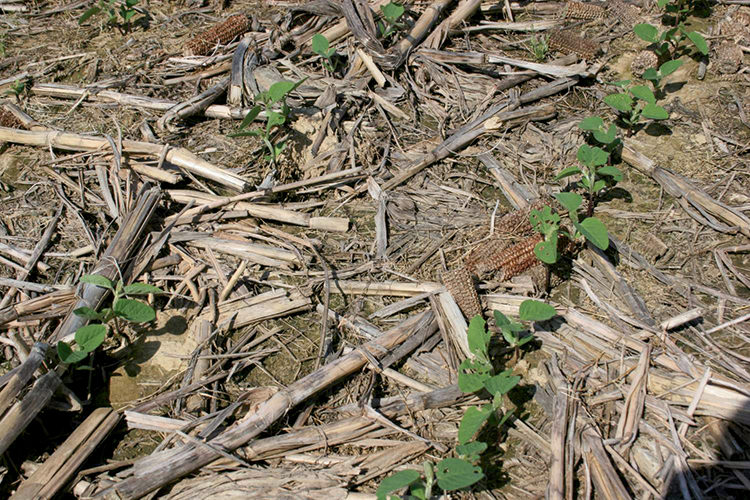No-Till Farmer
Get full access NOW to the most comprehensive, powerful and easy-to-use online resource for no-tillage practices. Just one good idea will pay for your subscription hundreds of times over.

No-tilling corn and soybeans presents many challenges to producers across the country, especially within continuous corn and other high-residue environments.
Two strategies found to increase yields and profits in no-till include starter fertilizers and properly configured residue managers.
Starter fertilizers provide supplemental nutrition, which is important in early planted, cool no-till environments. Nutrients like nitrogen, phosphorus and zinc have all been found to improve early growth, shorten maturity and increase yields vs. untreated checks.
To help obtain a uniform seeding depth and a consistent standard of emergence across the field to take full advantage of starter fertilizers, I suggest that residue managers be fitted to no-till planters.
Removal of residue from the seed zone improves seeding depth consistency. The image “Residue Interference” (above) illustrates a field of soybeans that were no-tilled into 200-bushel-per-acre corn residue without the use of residue managers.
Notice the skip within the left row where the corn stalks were criss-crossed, causing gauge wheels to rise up and drop soybean seeds in dry soil at the soil surface.
With soybean seed nearing $50 per 50-pound unit — more if treated with a seed treatment — seed needs to be placed at a consistent depth in the soil.
Properly configured and adjusted residue managers would have moved these stalks aside to help achieve more consistent seed placement depth.
Residue managers lightly till the seed zone, which helps warm soils and increase nutrient availability. Research shows small increases in soil temperatures can have a significant impact on…